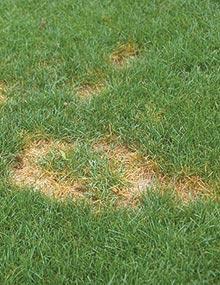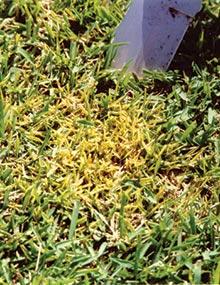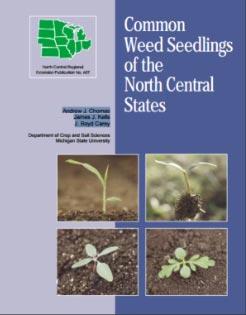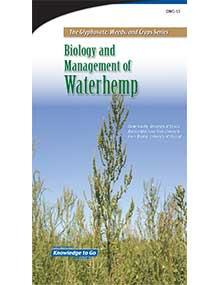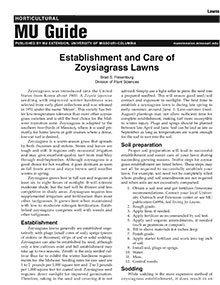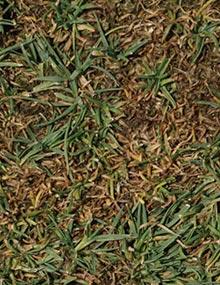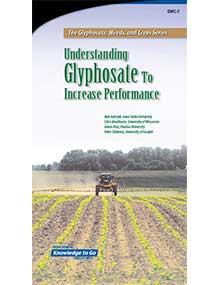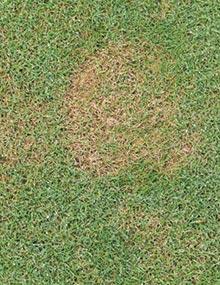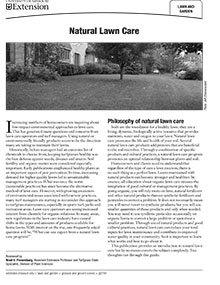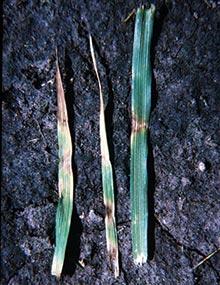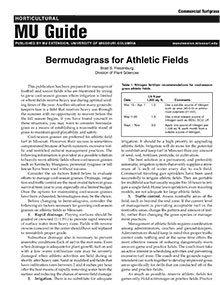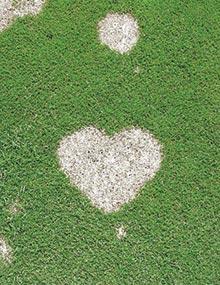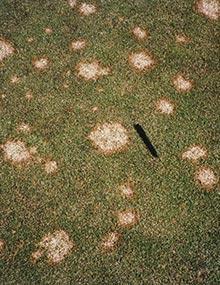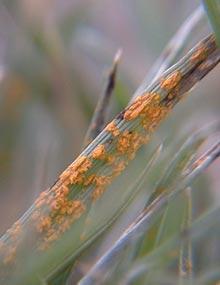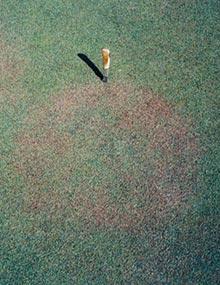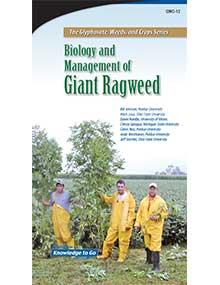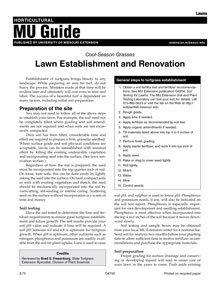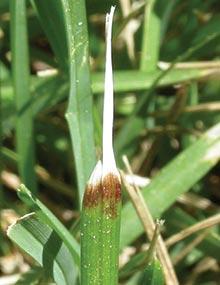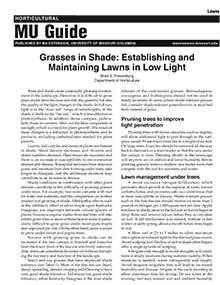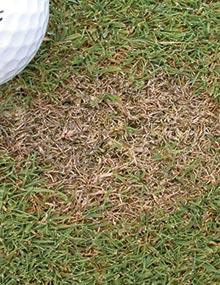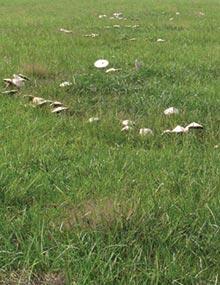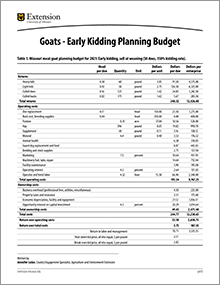Identification and Management of Turfgrass Diseases, Page 20
Reviewed
Summer patch, sometimes referred to as frogeye patch, is a destructive disease of Kentucky bluegrass maintained for golf course fairways, green surrounds, parks and residential landscapes
Identification and Management of Turfgrass Diseases, Page 23
Reviewed
Yellow tuft is a cool-season disease that is commonly observed on creeping bentgrass and intensively managed Kentucky bluegrass.
Common Weed Seedlings of the North Central States
Reviewed
Editor’s note
The following abstract describes a publication that is available for purchase from Michigan State Extension. To order this publication, please visit the MSU Extension Bookstore.
Biology and Management of Waterhemp
Reviewed
Editor’s note
The following abstract describes a publication that is only available as a downloadable PDF.
Establishment and Care of Zoysiagrass Lawns
Reviewed
Zoysiagrass is a warm-season grass that grows best in full sun. It can be established in several ways. Learn how to establish and care for a zoysiagrass lawn in this guide.
Identification and Management of Turfgrass Diseases, Page 03
Reviewed
Anthracnose basal rot is a destructive crown rotting disease of creeping bentgrass and annual bluegrass on putting greens. On mixed bentgrass/annual bluegrass putting greens, the causal fungus infects one species or the other but rarely both.
Understanding Glyphosate to Increase Performance
Review
Editor’s note
The following abstract describes a publication that is only available as a downloadable PDF.
Identification and Management of Turfgrass Diseases, Page 06
Reviewed
Copper spot is a foliar disease of bentgrass, with severest outbreaks occurring on velvet bentgrass. It also occurs sporadically on creeping bentgrass greens and higher cut creeping bentgrass tees and fairways. Gloeocercospora sorghi causes a leaf spot of bermudagrass and zoysiagrass as well.
Natural Lawn Care
Reviewed
Identification and Management of Turfgrass Diseases, Page 09
Reviewed
Drechslera diseases are part of a group of diseases caused by fungi that were once cataloged in the genus Helminthosporium. Over the years, taxonomists have revised the genus Helminthosporium to include the genera Drechslera, Marielliotta, Bipolaris and Exserohilum. This section covers the diseases Drechslera leaf spot and melting-out caused by D. poae and red leaf spot caused by D. erythrospila.
Bermudagrass for Athletic Fields
Reviewed
Identification and Management of Turfgrass Diseases, Page 12
Reviewed
Gray snow mold is a winter turfgrass disease in regions where snow cover persists for long periods. All grasses can be damaged to some extent, but injury is often more severe on annual bluegrass and bentgrass putting greens.
Identification and Management of Turfgrass Diseases, Page 15
Reviewed
Microdochium patch is most common on new bentgrass greens under cover or in situations where nitrogen fertility was high going into the winter.
Identification and Management of Turfgrass Diseases, Page 18
Reviewed
Rust occurs to some extent on all turfgrasses, but the rust fungi are generally host specific. Rust is most severe on susceptible cultivars of Kentucky bluegrass, tall fescue, perennial ryegrass and zoysiagrass. Rust symptoms usually appear in late August to early September and continue through the fall months.
Identification and Management of Turfgrass Diseases, Page 21
Reviewed
Take-all patch of creeping bentgrass is a soilborne disease caused by a darkly pigmented, ectotrophic root-infecting fungus. The disease is most common on new greens. It also occurs on reconstructed greens, especially when methyl bromide had been used in the renovation.
Biology and Management of Giant Ragweed
Reviewed
Editor’s note
The following abstract describes a publication that is only available as a downloadable PDF.
Cool-Season Grasses: Lawn Establishment and Renovation
Reviewed
Established turfgrass brings beauty to any landscape. The success of a turfgrass lawn depends on many factors, from soil preparation to seeding and watering. Learn steps for creating a beautiful cool-season grass lawn in this University of Missouri Extens
Facts About Glyphosate-Resistant Weeds
Reviewed
Editor’s note
The following abstract describes a publication that is only available as a downloadable PDF.
Identification and Management of Turfgrass Diseases, Page 04
Reviewed
Ascochyta leaf blight results in the rapid development of large irregularly shaped, straw-colored patches on Kentucky bluegrass and occasionally on tall fescue and perennial ryegrass during the summer. Because Ascochyta spp. are primarily foliar pathogens, diseased turfgrass usually recovers relatively quickly.
Grasses in Shade: Establishing and Maintaining Lawns in Low Light
Reviewed
Growing grass under trees is hard because the quality as well as the quantity of light changes in the shade. Learn what grass species and cultivars are shade-tolerant and how to manage a shady lawn in this University of Missouri Extension guide.
Identification and Management of Turfgrass Diseases, Page 07
Reviewed
Dead spot is a disease of new sand-based bentgrass greens or renovated greens where methyl bromide was used in the renovation. The disease first occurs one to four years after construction or renovation, gradually disappearing one to three years after its first occurrence.
Identification and Management of Turfgrass Diseases, Page 10
Reviewed
Fairy ring is caused by more than 60 basidiomycete fungi, including those producing the familiar puffballs and toadstools. The rings result from the activities of these fungi growing radially through the thatch or soil, rather than from a direct parasitic relationship with the turfgrass.
Goats — Early Kidding Planning Budget
Revised
Use this doe flock enterprise budget to estimate costs and returns when birthing goat kids in the winter — a system with seasonally high prices for kids and low land needs.
Milk and Dairy poster
Revised $33
This poster reviews the benefits of calcium-rich foods, key nutrients provided, lactose intolerance, alternate calcium sources and food safety for dairy foods.
